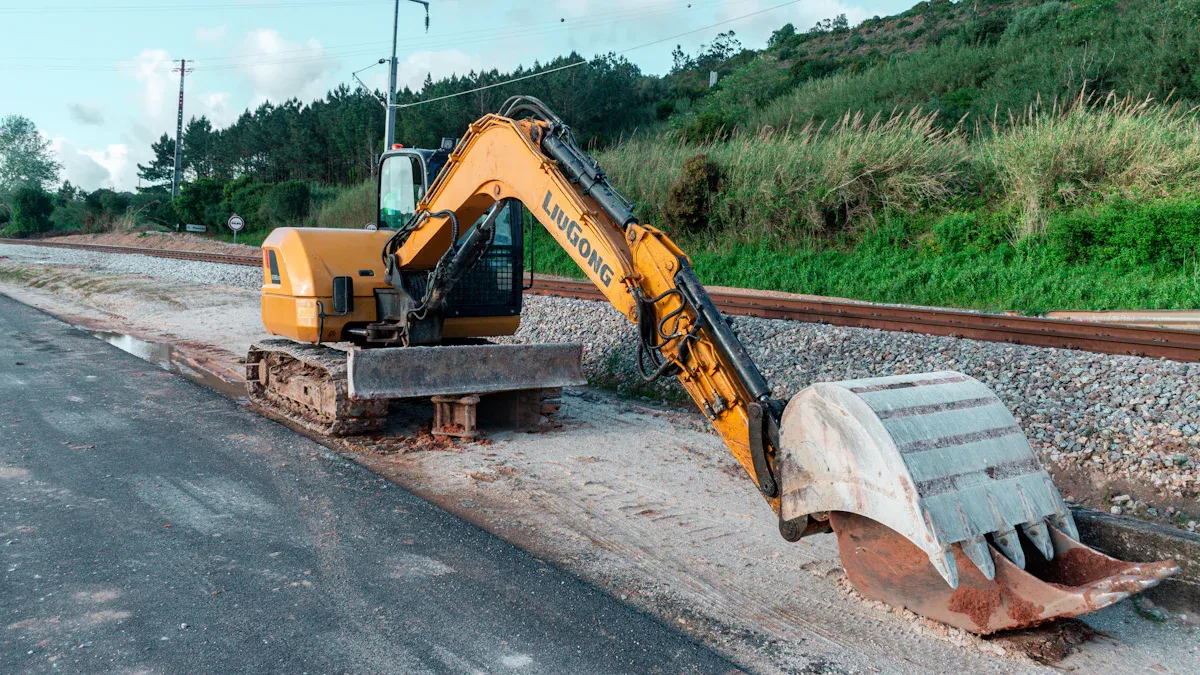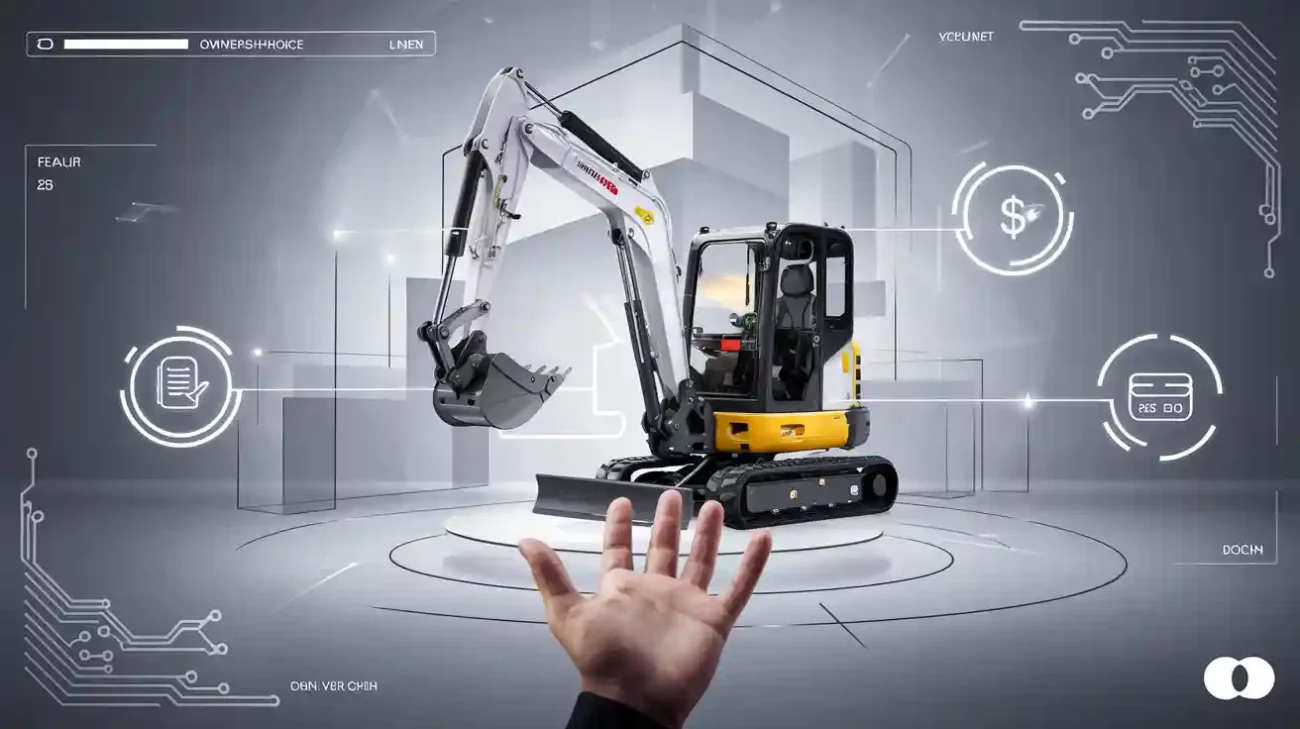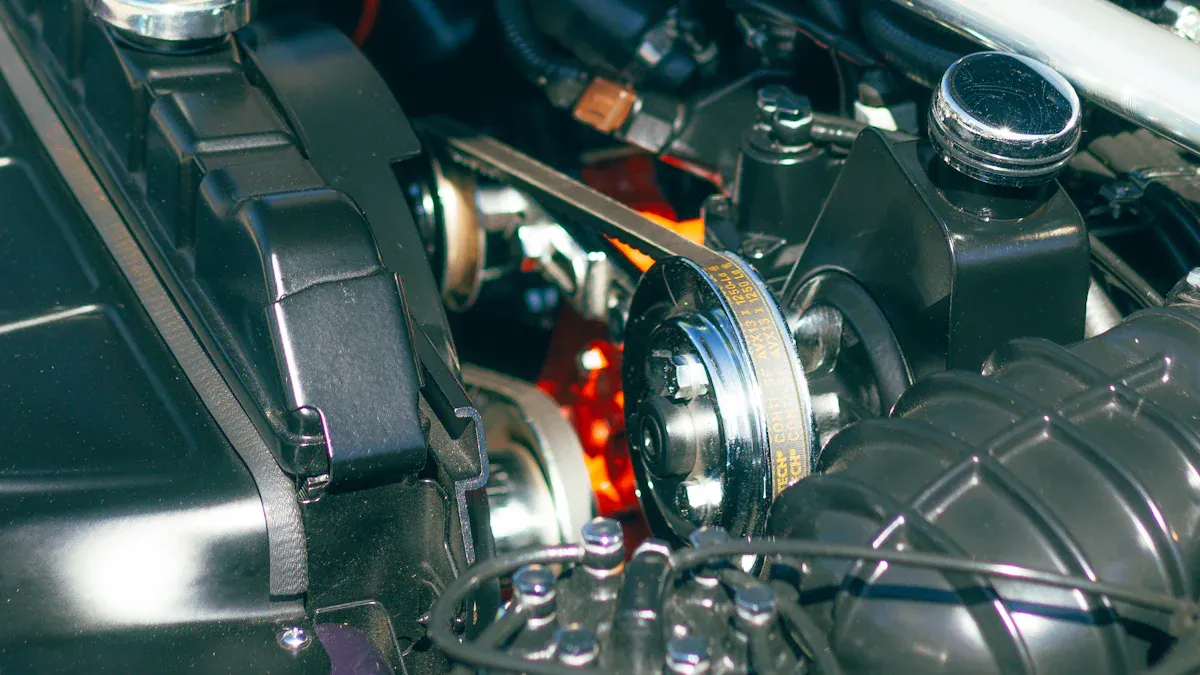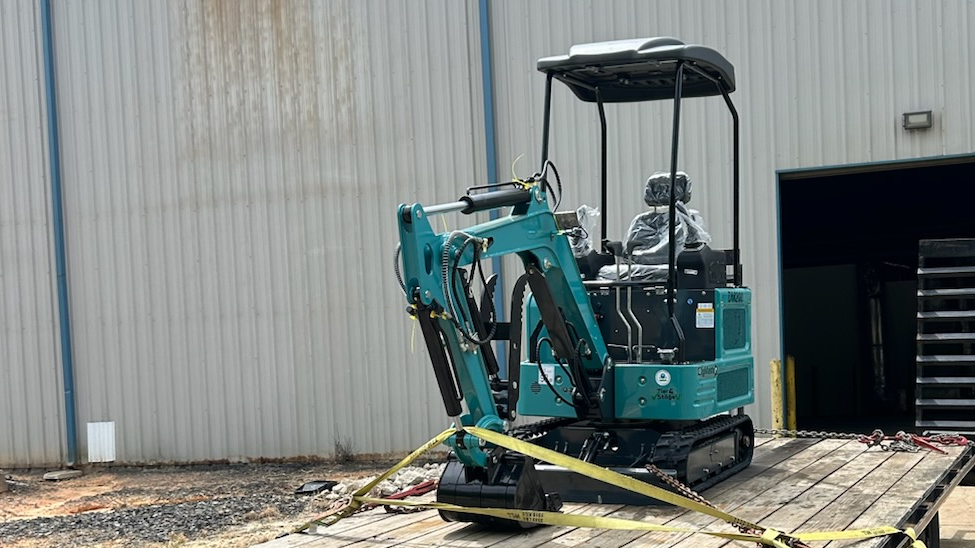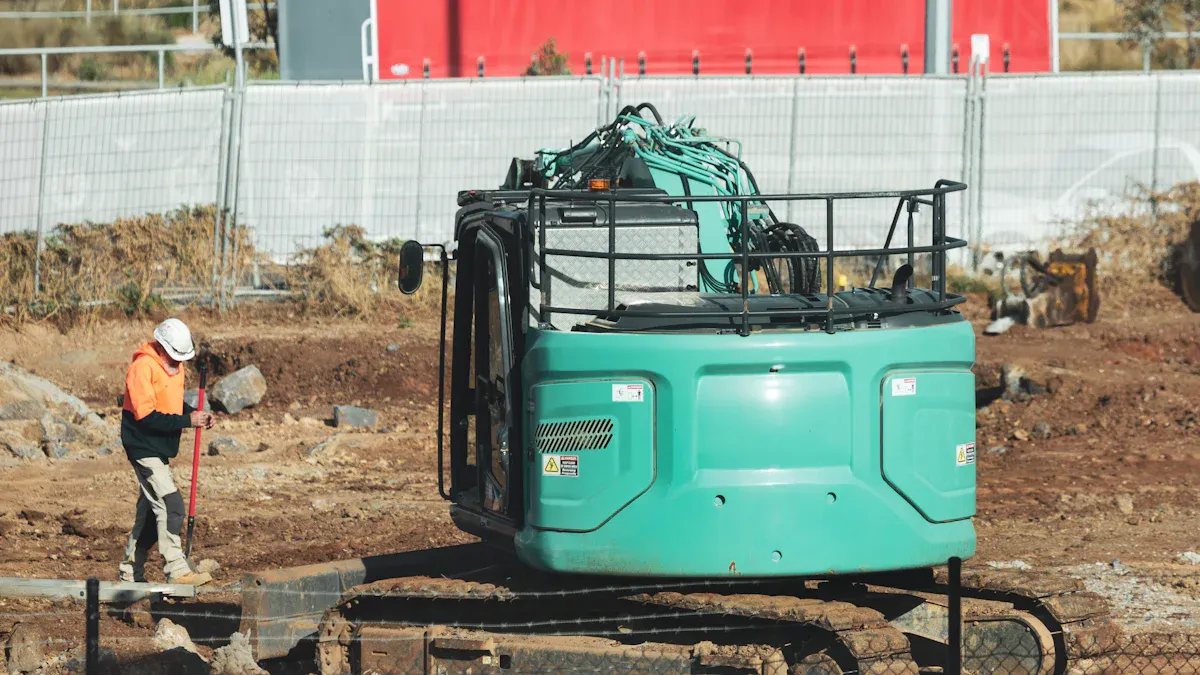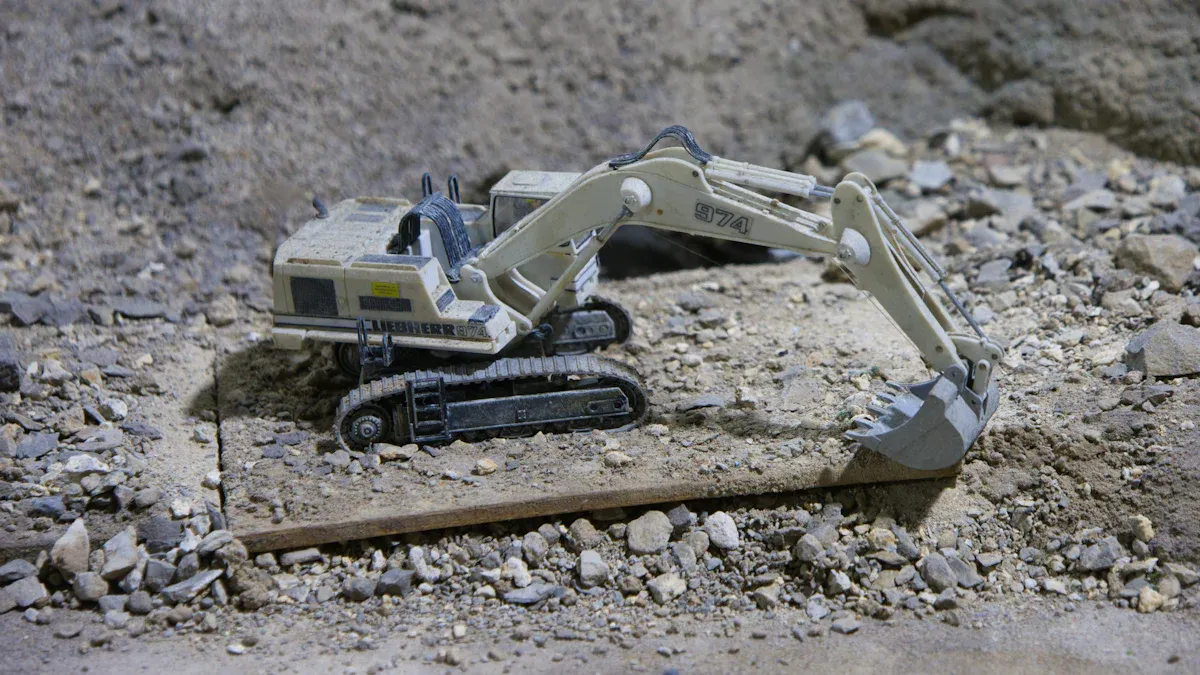Choosing the best compact excavator is about more than price. You must think about your project’s size and lifting needs. You should also consider how reliable the machine is. Each model has special features to look at. For example, zero tail swing helps in small spaces. Attachments make the machine more useful. The table below shows how Affordable Mini Excavators’ features fit different needs. This helps you pick a smart and budget-friendly machine.
Feature Category | Alignment with Project Requirements |
|---|---|
Size and Weight | Small size and zero tail swing help in tight spots and narrow areas. This is important for city or small job sites. |
Functionality and Attachments | Quick-change systems let you switch tools like buckets, breakers, and blades. This helps the excavator do many jobs like digging, breaking, or moving things. |
Performance Specifications | Engine power and digging force are balanced with fuel use. This helps the machine work well and saves fuel. |
Operator Comfort | Good controls and cab design help workers stay comfortable. This is important for long jobs. |
Safety Features | Seatbelts, alarms, and cameras help keep workers safe. These are very important for some job sites. |
Budget Considerations | First cost, running costs, and resale value are checked. This makes sure the machine is a good deal for your project. |
Key Takeaways
Pick a mini excavator that matches your project size and space. Think about its weight, how deep it can dig, and how much it can lift. – Find machines that have helpful attachments and let you change tools easily. This helps you do many jobs with just one excavator. – Think about all the costs, like fuel, repairs, and how much you can sell it for later. Do not only look at the price to buy it. – Choose brands that are known to work well. Check the machine’s condition closely, especially if it is used. This helps you avoid expensive repairs. – Take good care of your excavator. This will help it last longer and keep your money safe.
Affordable Mini Excavators Overview

What Is a Mini Excavator?
A compact excavator is a small but strong machine. It can dig, lift, and move things. You can use it where big machines cannot go. Most affordable mini excavators weigh under 13,000 pounds. They have a small tail swing and turn in tight spaces. This makes them great for backyards or crowded places. You can move a compact excavator with a regular trailer. This saves both time and money.
Compact excavators do not dig as deep or lift as much as standard excavators. But they are easier to move and do less damage to the ground. You do not need a special license to drive most compact excavators. Many homeowners and small contractors like affordable mini excavators. They are simple to use and easy to take care of. The best compact excavators give you the right mix of size, power, and efficiency.
Tip: If you need to work in small areas or on soft grass, a compact excavator is usually the best pick.
Common Uses
You will see compact excavators on many job sites. They are used for landscaping, digging trenches, and small foundation work. Here is a table that shows which size and features fit each project:
Project Type | Recommended Mini Excavator Size (tons) | Typical Digging Depth (feet) | Lifting Capacity (lbs) | Key Requirements and Notes |
|---|---|---|---|---|
Residential Landscaping | 1.1 – 3 | 8 – 10 | Up to ~2,500 | Fits in backyards, causes minimal lawn damage, great for ponds, gardens, drainage |
Utility Trenching | 1.1 – 4 | 8 – 10 | Up to ~2,500 | Precise trenching for pipes and cables, narrow buckets for clean lines |
Foundation Work | 2.5 – 7 | 8 – 16 | Up to 7,500 | Needs deeper digging and higher lifting, more stability and power |
Affordable mini excavators can dig small foundations or remove tree stumps. They can also help make drainage systems. These machines work well for home projects or small commercial jobs. The best compact excavators help you finish work faster and with less effort. They use less fuel and cost less to keep running than bigger machines.
Note: Compact excavators are the best value for homeowners and small contractors. You get the power you need without paying for extra features.
Factors to Consider When Buying a Mini Excavator
When you want to buy a compact excavator, you should think about a few important things. These things help you pick the right machine for your job and your budget. If you choose well, you will save money, time, and hard work. Here are the main features of mini excavators you need to check before you buy.
Size and Weight
Size and weight are very important for your project. Small machines fit in tight spaces and do not hurt the ground as much. Heavy machines can dig deeper and have better grip. You also need to think about how you will move the machine. Lighter excavators are easier and cheaper to move.
Most compact excavators weigh between 2,000 and 20,000 pounds. The most common sizes in North America are 3.5 and 5 metric tons. These sizes are good for digging trenches, landscaping, and getting a site ready. The table below shows how different weights work for different jobs and digging needs:
Weight Class (Operating Weight) | Typical Dig Depth | Common Applications | Key Size-to-Weight Ratio Benchmark |
|---|---|---|---|
Under 1 ton | ~7-8 feet | Very small, confined projects | Suitable for tight spaces and light digging tasks |
1-2 tons | Up to 10 feet | Trenching, small demolition, grading | Practical for trenching and small demolition |
3-5 tons (6,000-10,000 lbs) | 8-12 feet | Trenching, foundation digging, site prep | Ideal for foundation work and deeper trenching |
6-10 tons (12,000-20,000 lbs) | Up to 15 feet | Backfilling, demolition, heavy clearing | Best for deeper digging and larger site prep |
Tip: Always know the legal weight limits for moving your compact excavator. This can change your costs and how you plan your job.
Lifting Capacity and Digging Depth
Lifting capacity and digging depth are two very important things to look at. You need enough power to lift heavy things and dig deep enough for your job. Most affordable mini excavators can lift between 1,000 and 1,500 pounds. Bigger models can lift up to 10,000 pounds. How deep you can dig depends on the size and shape of the machine.
The table below shows how lifting and digging change with different models:
Feature | Details / Range |
|---|---|
Typical Lifting Capacity | 1,000 to 1,500 pounds for most models |
Max Lifting Capacity | Up to 10,000 pounds for larger models |
Digging Depth Examples | 300.9D Cat: 5.68 feet; 308 Cat: 13.47-15.23 feet |
Weight Classes | From 2 tons to over 10 tons |
Factors Affecting Lifting Capacity | Counterweight, attachments, hydraulics, ground conditions |
Model Examples | 300.9D Cat (2,061 lbs, 13 HP), 308 Cat (18,519 lbs, 65 HP) |
Small compact excavators (under 3 tons) are best for small or tight spaces.
Heavier models (5-10 tons) give you more strength for hard jobs.
Hydraulic systems, counterweights, and attachments all change how much you can lift and dig.
Note: Always make sure the digging depth and reach fit your job. If you cannot dig deep enough, you will have to work more. If your machine is too big, it will cost more.
Fuel Efficiency and Operating Costs
Fuel efficiency and operating costs are important for your wallet. Compact excavators use less fuel than big machines. This helps you save money over time. Look for models with engines that use less fuel and smart hydraulic systems. These features help you use less fuel and make less pollution.
Operating costs include fuel, fixing, and taking care of the machine. Some brands let you go longer between services and make it easy to get parts. This helps you spend less and keep your machine working longer. Always look at the total cost to own the machine, not just the price to buy it.
Attachments and Versatility
Attachments make your compact excavator do more jobs. You can use buckets, rippers, augers, and compactors. This means you can dig, grade, drill, and clear land with one machine. Quick-change systems let you switch tools fast and save time.
Rippers break up hard dirt and ice.
Augers make holes for posts and foundations.
Compactors press down soil to make it firm.
Buckets come in many sizes for digging or moving stuff.
You can use the same compact excavator for landscaping, building, and even farming. This means you do not need to buy more machines. You save money on workers and get more done.
Tip: Pick a model that lets you change attachments easily. This helps you work faster and do more kinds of jobs.
Brand Reliability
Reliability and strength are very important when you buy a compact excavator. Good brands like CAT, Bobcat, Kubota, Volvo, and Hitachi are trusted by many people. These brands use strong parts and new technology. They make machines that last a long time and are easy to fix.
CAT models, like the 305E2, last for years and keep their value. Kubota and Bobcat have good prices and are easy to take care of. Volvo machines have service points close together and do not need grease as often, so daily care is simple. Wacker Neuson and Hyundai are also known for being tough and running smoothly.
You should always read reviews and talk to other people before you buy. A reliable compact excavator will save you money on repairs and lost time. It will also help you finish your jobs on time.
Note: Strong and reliable machines protect your money. They help you get the most out of your machine for many years.
Best Mini Excavator for the Money
Top Affordable Models
When you look for the best mini excavator for the money, you want a machine that gives you strong performance and good value. Many affordable mini excavators offer the right mix of price, power, and useful features. You can see how the top mini excavators compare in the table below:
Model | Price | Load Capacity | Digging Depth | Reach | Best Use Case | Pros | Cons |
|---|---|---|---|---|---|---|---|
Brand A | $12,000 | 3,000 lbs | 5 feet | 10 feet | Home landscaping, light trenching | Reliable, easy to operate | Limited lift height |
Brand B | $14,500 | 2,800 lbs | 4.5 feet | 9 feet | Tough terrain, small construction sites | Extremely durable | Heavier, harder to maneuver in tight spaces |
Brand C | $13,000 | 3,500 lbs | 6 feet | 12 feet | Both light and heavy tasks, deeper digging | Versatile, best for mixed jobs | Higher initial cost |
You should match the model to your main job needs. If you need more digging depth, Brand C gives you the best reach and depth for the price. Brand A works well for smaller jobs and easy transport. Brand B stands out for tough ground but may not fit in tight spots.
Strengths and Weaknesses
You want the best mini excavator for the money to last and work well. Each model has its own strengths and weaknesses:
SANY SY35U: This compact excavator has the highest digging force and the longest warranty. You get a well-maintained machine, but demo units may not show how it handles heavy daily use.
Bobcat E35: You get the fastest track speed, which helps you finish jobs quickly. Rental units often have higher wear, so check the hours and condition.
New Holland E37: This model often comes from single owners who take good care of it. You get moderate hours and an extended warranty, but digging force and speed are average.
Tip: Always check the hours and warranty before you buy. A longer warranty and lower hours mean better value.
You should also know about the market. Many small contractors face high equipment costs and trouble finding skilled operators. Affordable mini excavators help you save money, but you must pick the right features and depth for your job. Electric models and smart technology can lower your costs and make your work easier.
New vs. Used Affordable Mini Excavators
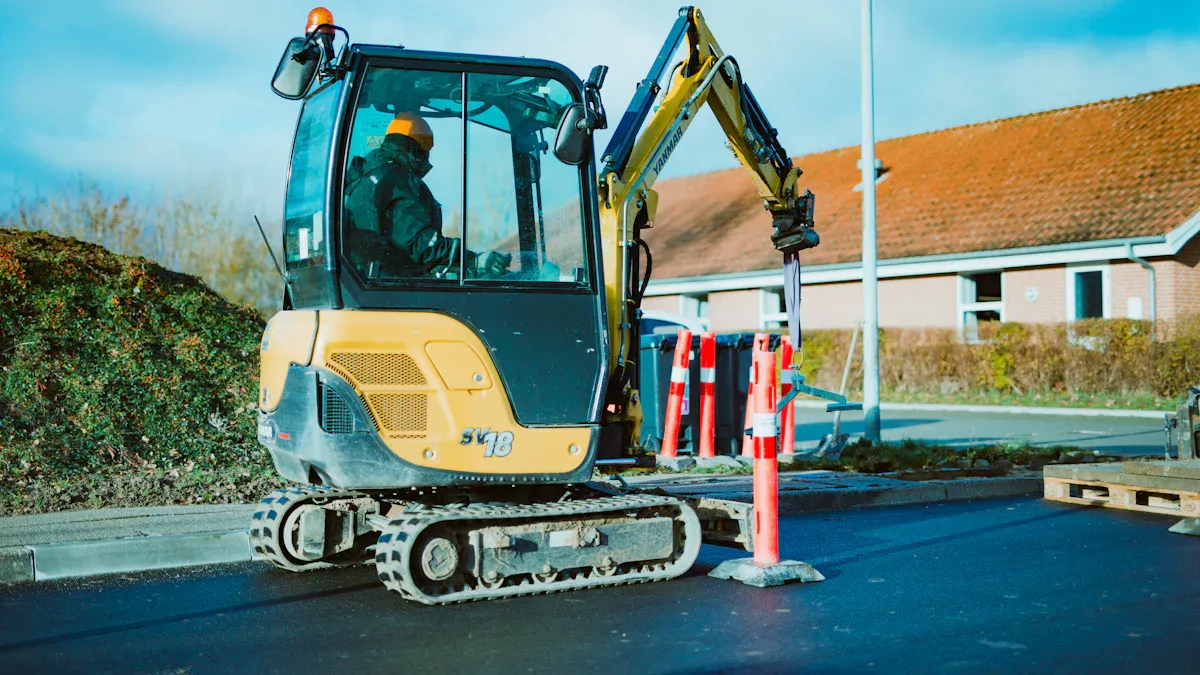
Pros and Cons of New
Buying a new mini excavator gives you the newest technology. You also get a full warranty. New machines use less fuel and have more safety features. You can pick the model and options you like best. It is easier to get financing for new equipment. This helps you plan your budget.
Here is a look at the main costs for new mini excavators:
Cost Component | Description / Proportion |
|---|---|
Initial Purchase Price | $20,000 to $90,000 (usually $30,000-$40,000) |
Annual Operating Expenses | Over $40,000 total |
– Wages and Benefits | 50% of operating expenses (~$24,750/year) |
– Fuel | 20% of operating expenses (~$9,600/year) |
– Other Costs | 30% of operating expenses (~$12,000/year) |
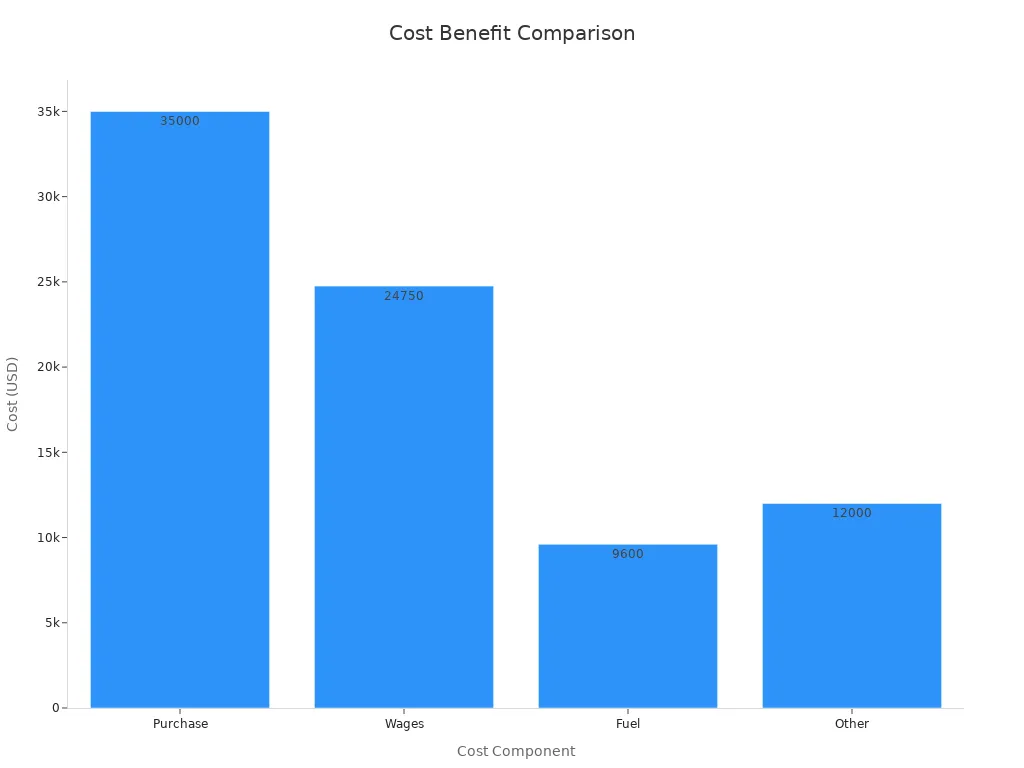
New machines are less likely to break down. They are more reliable and need fewer repairs. But they cost more at first, so you need to think about your long-term plans.
Pros and Cons of Used
Used mini excavators cost less when you buy them. You can save money if you choose a good brand. These machines often keep their value and work well. But you might find hidden problems or pay more for repairs.
Some used machines from unknown brands break down more and sell for less.
Maintenance costs depend on how easy it is to get parts and help from dealers. OEM parts cost more but last longer.
Taking care of your machine and fixing it often keeps it running well.
Trusted brands last longer, but they may cost more at first.
Training operators and using the right fluids and parts helps stop breakdowns.
Machines with good service records are easier to sell later.
Be careful with very cheap brands. They can have more leaks and engine issues, which makes them cost more over time.
Inspection Tips
Check these things before you buy a used mini excavator to avoid big problems:
Look at the hours the machine has worked and its age.
Ask for service records to see if it got regular care.
Check the outside for dents, cracks, or worn paint.
Look at the tracks and undercarriage for damage or uneven wear.
Start the engine and hydraulics. Watch for smoke or odd sounds.
Move the cab and boom. See if anything is loose or moves too much.
Make sure all features, like air conditioning and radio, work.
Check the hour meter for signs it was changed.
Make sure the machine meets emissions rules for its year.
Ask about dealer help and any warranty left.
A good inspection helps you find hidden problems and keeps your money safe.
Maximizing Value and Longevity
Maintenance Tips
You can help your mini excavator last 8,000 to 10,000 hours or more with the right care. Regular maintenance keeps your machine running smoothly and saves you money on repairs. Here are some key steps you should follow:
Inspect and clean the undercarriage often. Dirt and debris cause early wear.
Change engine oil as the manufacturer suggests. This prevents engine damage.
Check hydraulic fluid levels. Low fluid can lead to costly repairs.
Keep the cooling system clean. This stops the engine from overheating.
Grease all pivot points to reduce friction and wear.
Store your mini excavator on level ground and protect it from the weather.
Using telematics can help you track maintenance needs. You get alerts for service, which helps prevent breakdowns and keeps your machine in top shape.
Skilled operators also make a difference. Smooth, careful movements reduce wear on parts. Always use the right attachment for each job to avoid extra stress on your machine.
Resale Value
A well-maintained mini excavator holds its value over time. For example, after five years and about 3,500 hours of use, a SANY SY35U can still sell for $20,000 to $25,000. The table below shows how value changes:
Item | Description | Approximate Value |
|---|---|---|
Initial Cost | Purchase price of SY35U | $66,970 |
Variable Costs | Over 5 years | $16,544 |
Resale Value | After 5 years (~3,500 hours) | $20,000-$25,000 |
Net Cost | After resale | $58,514 |
If you use your machine less, you keep more value. If you use it more, your cost per hour drops. Keeping good service records and fixing problems quickly will help you get the best price when you sell.
Where to Find Deals
You can find the best value by looking at both new and used options. Focus on reputable brands like Kubota, Bobcat, John Deere, and Yanmar. Test the machine before you buy. Check that all attachments work and that the machine fits your needs.
Compare prices from dealers, auctions, and online marketplaces.
Ask about financing, leasing, or rental options to match your budget.
Avoid deals that seem too cheap, especially from unknown brands.
Stick to regular maintenance and keep detailed records to protect your investment.
Smart buyers look for machines that balance price, performance, and reliability. Following these tips helps you get the most from your mini excavator for years to come.
When you choose the best mini excavator, match its size, weight, and features to your job and budget. Look at total ownership costs, not just the price. Think about fuel, repairs, and operator skill.
Check brand reputation and comfort.
Compare new and used machines for value.
Keep up with maintenance to protect your investment.
Review attachments and digging depth.
Consider transportation needs and track type.
Balance cost, performance, and long-term benefits.
Start your search with these tips to make a smart, confident decision.


